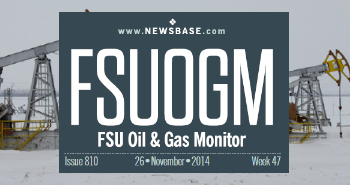Russia sees sharp fall in oil reserves replacement
_Cropped.jpg)
The growth in Russia's oil reserves, including gas condensate, dropped by 9% in 2024 to 516mn tonnes (3.8bn barrels), matching the country's oil production for the year, according to data from state subsoil agency Rosnedra, Russian business paper Vedomosti reported on May 12. This volume relates to Russia’s AB1C1 categories for reserves, which roughly correlates to proven and probable international classifications.
The last time Russia saw lower reserve replacement rates was in the early 2000s. Since the mid-2000s, reserves growth has consistently exceeded production volumes. During the 2010s, newly discovered reserves ranged from 550 to 851mn tonnes annually, peaking at 1.04bn tonnes in 2020. In 2023, the increase was 566mn tonnes.
Gas reserves growth also dropped in 2024, decreasing by 6% to 723bn cubic metres, the lowest figure since 2018. Gas production, including losses, stood at 684 bcm, according to Rosnedra.
Russia discovered 39 new oil and gas fields last year – four fewer than in 2023. Two of these were classified as large gas condensate fields: the Mitik'yakhskoye field in the Yamalo-Nenets region, licensed to Rosneft, with reserves of 118.5 bcm of gas and 34.6mn tonnes of condensate; and the Ilginskoye field in the Irkutsk region, operated by Sibgaz, containing 135.4 bcm of gas and 4.4mn tonnes of condensate.
Medium-sized fields included the A.V. Pushin oil field in the Orenburg region, the Mishvanskoye field in the Nenets region, the Yuzhno-Tigyanskoye field in Yakutia, and the Nezhdanny Mys field in the Tomsk region. Also listed were the N.V. Myshevskoye oil condensate field in the Irkutsk region, the Nelyatskoye oil and gas condensate field in Yakutia, and the Severobaykalovskoye gas field in the Krasnoyarsk region.
The remaining new fields were classified as small or very small. In April 2024, Rosnedra reported that 80-90% of oil and gas fields discovered in recent years fall into these categories.
The Russian Natural Resources Ministry also noted to Vedomosti that total oil reserve growth, including estimated but unproven reserves (B2 and C2 categories), reached 803mn tonnes in 2024, while gas reserves rose by 1.19 trillion cubic metres. The funding for geological exploration in the oil and gas sector increased by around 7% to RUB355bn ($4.8bn), including RUB344bn from subsoil users, up 7.5% from the previous year. The federal budget contributed about RUB11bn.
Budget funding for geological exploration in 2025 is projected at RUB10.3bn, according to Vedomosti, while subsoil user spending is expected to remain at 2024 levels. The ministry expects oil and gas reserves growth to match or exceed production levels in 2025.
Dmitry Kasatkin, a partner at Kasatkin Consulting, told Vedomosti that the decline in reserve growth in 2024 was driven by several systemic factors. Most of the easily accessible reserves in traditional oil and gas provinces have already been explored and developed, shifting exploration to more remote areas such as Eastern Siberia, the Arctic and the continental shelf. These regions require significantly more time and investment for exploration.
Sergey Kaufman, an analyst at Finam, added that the increase in exploration funding in 2024 was below the inflation rate of 9.5%, meaning real investment actually fell. Rising costs and challenging conditions in traditional regions also lengthen exploration timelines, according to Kasatkin. The lack of access to Western technology, owing to sanctions, further complicates the situation. After Russia's invasion of Ukraine in 2022, major Western oilfield service providers – Schlumberger, Halliburton, Baker Hughes and Weatherford – halted investments and equipment deliveries to Russia, with Halliburton and Baker Hughes later selling their Russian operations to local managers.
Kaufman pointed out that major Russian oil and gas companies currently see no urgent need to boost reserves significantly. Production potential is constrained by OPEC+ agreements and sanctions, while existing reserves are sufficient for stable output. If current trends continue and exploration investment does not increase substantially, oil reserves growth could fall below production levels in the coming years, analysts told Vedomosti. However, the gas sector remains more stable, though the downward trend in reserves growth is evident.
Kasatkin sees the Arctic, Eastern Siberia and the Far East as promising areas for increasing oil and gas reserves. Kaufman also highlights the potential of the Timan-Pechora oil and gas province, the Volga region, and the Pre-Caspian basin. The development of new domestic drilling technologies, deep seismic surveys and hydrodynamic modelling of complex reservoirs are crucial to improving exploration efficiency, he said.


Follow us online